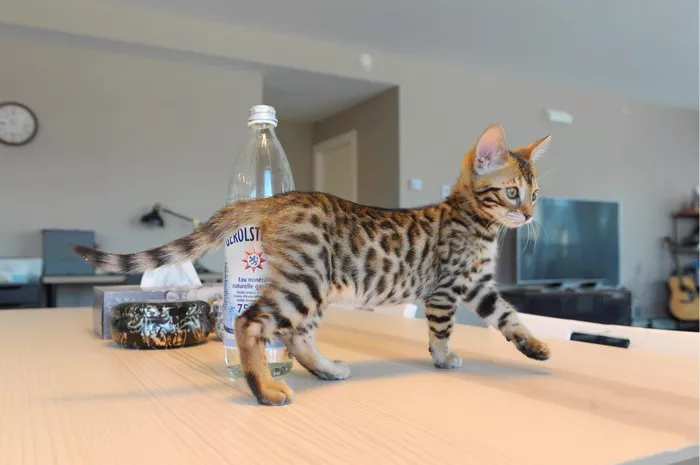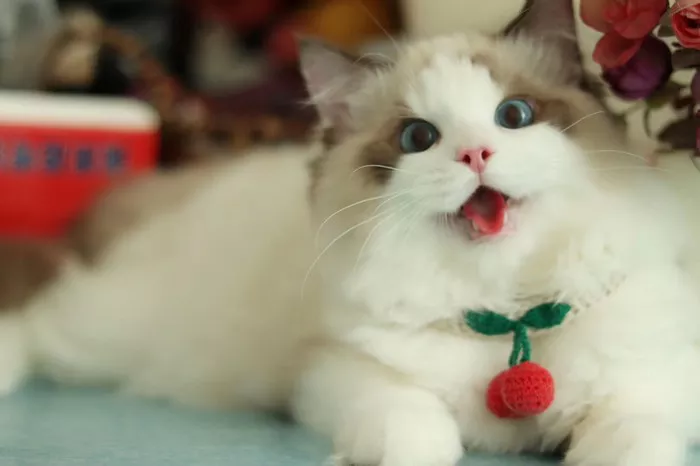Bengal cats are renowned for their striking appearance, playful demeanor, and energetic personality. Originating from the crossbreeding of domestic cats with Asian Leopard cats, Bengal cats possess a wild and exotic look that sets them apart from other feline breeds. If you’re considering adding a Bengal cat to your family but already have other cats, you may wonder how well they will get along. In this comprehensive guide, we’ll delve into the topic of Bengal cats’ compatibility with other cats, exploring their social nature, behavior traits, and strategies for successful multi-cat households.
Bengal Cats
Bengal cats are a relatively new breed that was developed in the United States in the 1980s. Known for their distinctive coat patterns reminiscent of wild leopard markings, Bengal cats have captured the hearts of cat enthusiasts worldwide. They are highly intelligent, active, and curious cats with a playful and mischievous nature.
Bengal cats are often described as “dog-like” in their behavior, as they enjoy interactive play, fetch, and even walking on a leash. Despite their wild appearance, Bengal cats are affectionate and social animals that form strong bonds with their human companions.
Understanding Bengal Cats’ Social Nature
Bengal cats are known for their sociable and outgoing personalities, making them generally good candidates for multi-cat households. However, like all cats, Bengal cats have individual temperaments and preferences that can influence their compatibility with other cats.
Many Bengal cats enjoy the company of other felines and can form close bonds with compatible cat companions. They may engage in mutual grooming, play, and sleeping together, fostering a sense of camaraderie and companionship.
However, it’s essential to recognize that not all Bengal cats will get along with other cats, and compatibility can vary depending on factors such as age, gender, temperament, and past experiences. Some Bengal cats may prefer to be the only cat in the household and may exhibit territorial behavior or aggression towards other cats.
Factors Affecting Bengal Cats’ Compatibility with Other Cats
Several factors can influence Bengal cats’ compatibility with other cats in a multi-cat household:
Early Socialization: Bengal kittens that are raised in a nurturing and social environment from an early age are more likely to develop positive social skills and get along well with other cats. Early interactions with littermates, mother cats, and humans can help shape a Bengal cat’s behavior and temperament.
Individual Temperament: Each Bengal cat has a unique personality and temperament that can influence their compatibility with other cats. Some Bengal cats are naturally more outgoing and sociable, while others may be more reserved or territorial. Understanding your Bengal cat’s personality and preferences can help you assess their compatibility with other cats.
Gender Dynamics: The gender of Bengal cats can play a role in their compatibility with other cats. In general, opposite-sex pairings (e.g., male and female) may be more harmonious than same-sex pairings (e.g., male and male or female and female). However, individual temperament and personality are more critical factors than gender alone.
Introductions and Acclimation: Introducing Bengal cats to each other gradually and allowing them time to acclimate to one another’s presence can help reduce stress and promote positive interactions. Providing separate spaces, resources, and opportunities for supervised interactions can facilitate a smoother transition and minimize conflicts.
Age and Socialization History: The age and socialization history of Bengal cats can also influence their compatibility with other cats. Younger Bengal cats may be more adaptable and open to forming new social bonds, while older cats may be set in their ways and less receptive to change. Cats with positive past experiences with other cats are more likely to be accepting of new feline companions.
Tips for Introducing Bengal Cats to Other Cats
If you’re considering adding a Bengal cat to your household or introducing a new Bengal cat to existing cats, here are some tips for successful introductions:
Gradual Introductions: Introduce Bengal cats to other cats gradually and in controlled environments. Start by exchanging scents between cats using blankets or toys and gradually progress to supervised face-to-face interactions.
Neutral Territory: Introduce Bengal cats to other cats in neutral territory where neither cat feels territorial or threatened. Use a separate room or space for initial introductions and gradually expand their access to the rest of the home once they become more comfortable with each other.
Positive Reinforcement: Use positive reinforcement techniques such as treats, praise, and interactive play to reward calm, relaxed behavior during introductions. Encourage mutual exploration and play between cats to foster positive associations and build rapport.
Monitor Interactions: Supervise interactions between Bengal cats and other cats closely, especially during the initial introduction phase. Watch for signs of stress, aggression, or discomfort, and intervene if necessary to prevent conflicts or injuries.
Provide Resources: Ensure that each cat has access to essential resources such as food, water, litter boxes, scratching posts, and resting areas. Having multiple resources available can help prevent competition and reduce tension between cats.
Be Patient: Introducing Bengal cats to other cats can take time and patience, so be prepared for a gradual adjustment period. Allow cats to set their own pace and avoid rushing the process, as this can lead to stress and setbacks.
Conclusion
Bengal cats are intelligent, energetic, and highly active feline companions that can make wonderful additions to multi-cat households under the right circumstances. While some Bengal cats may get along well with other cats and form close bonds with them, others may prefer to be the only cat in the household. Understanding the factors that influence Bengal cats’ compatibility with other cats and following appropriate introduction and acclimatization techniques can help promote harmonious relationships and peaceful coexistence within a multi-cat household.
If you’re considering adding a Bengal cat to your family, take the time to research reputable breeders, assess your existing cat’s temperament and personality, and plan introductions carefully to ensure a smooth transition for everyone involved. With patience, understanding, and positive reinforcement, Bengal cats can thrive in multi-cat households and bring joy and companionship to their feline companions for years to come.























